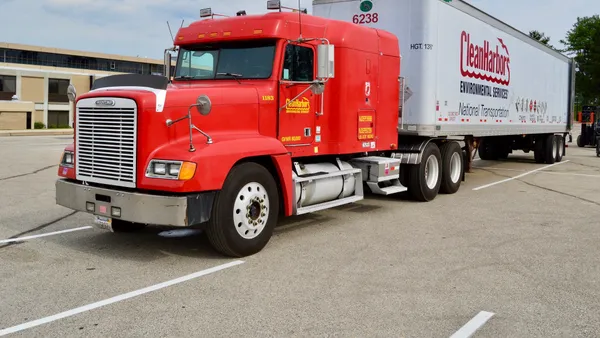UPDATE: July 15, 2019: Following a May court order, the EPA has proposed the approval of multiple plans for compliance with 2016 landfill emissions guidelines.
According to publications in the Federal Register, the agency intends to approve plans from: the New Mexico Environment Department, Delaware Department of Natural Resources and Environmental Control, West Virginia Department of Environmental Protection, the state of Arizona and Arizona's Pinal County Air Quality Control District. All proposals are subject to a 30-day comment period.
Dive Brief:
- The EPA has been required by a federal judge in California to move forward on implementation of 2016 Emission Guidelines for landfills. Per the ruling, the agency must now review compliance plans from the five states that have submitted them by Sept. 6 and set forth a federal plan by Nov. 6.
- The judge did not rule on when or how EPA should review future plan submissions from the remaining states, given that its jurisdiction is "limited to compelling EPA to perform mandatory duties it has already failed to perform." The agency's previously proposed submission deadline is Aug. 29.
- California Attorney General Xavier Becerra — who led the lawsuit along with the California Air Resources Board, Pennsylvania Department of Environmental Protection and six other attorneys general — celebrated the ruling. The NWRA and SWANA, which were initially proponents of the agency's delay, declined to comment.
Dive Insight:
Under the Obama administration, the EPA finalized the Emissions Guidelines and New Source Performance Standards rules to address changes in the landfill industry since prior rulemaking in 1996. The former applies to any landfill that accepted waste after Nov. 8, 1987. The latter focuses specifically on sites that commenced "construction, reconstruction, or modification" after July 17, 2014.
While these rules were finalized in Aug. 2016, the waste industry (led by Waste Management, Republic Services, NWRA and SWANA) asked for reconsideration in Oct. 2016. Following the election of President Trump, former EPA Administrator Scott Pruitt offered a more sympathetic ear to these arguments and granted a 90-day administrative stay in May 2017. Once that stay expired, EPA remained quiet on its intentions to review then-due state plans. The agency confirmed to Waste Dive exclusively in October, 2017 it would not be sanctioning states that hadn't submitted EG plans yet.
Since then, the agency has been engaged in a legal back-and-forth with both the coalition of eight states as well as national environmental groups to determine when and how these rules might actually get enforced. Amid of all this, the rules have taken effect and landfill operators have watched with great uncertainty about what comes next.
To date, five states (California, New Mexico, Arizona, Delaware, and West Virginia) have submitted plans that await review by the agency. Many other states have held off on submitting their own plans, given that the EPA has so far refused to read them, but remain engaged in the outcome. Along with California and Pennsylvania, Illinois, Maryland, New Mexico, Oregon, Rhode Island and Vermont were also part of the 2018 lawsuit that led to this latest court decision.
The court decision shows EPA's resistance was not just about implementing the regulations themselves, but also about the time required to review state plans and move forward with a federal plan. While plaintiffs were requesting state plan review and approval within 30 days, the agency was requesting upward of 8-12 months for certain states in the purportedly understaffed Region 9. The EPA also cited President Trump's repeated requests to reduce agency staffing, as well as ongoing time spent on other legal matters, as extenuating factors. The court ruled that EPA's "self-inflicted inconvenience" from the latter was not a satisfactory excuse for delay.
EPA has now been ordered to provide a status update every 90 days, starting Aug. 5, to track its progress on complying with the court's order. Timing on the review of remaining state plans is still unclear. It's possible there could be further legal avenues for the industry to challenge this decision, but sources indicate those options have now become more limited.











